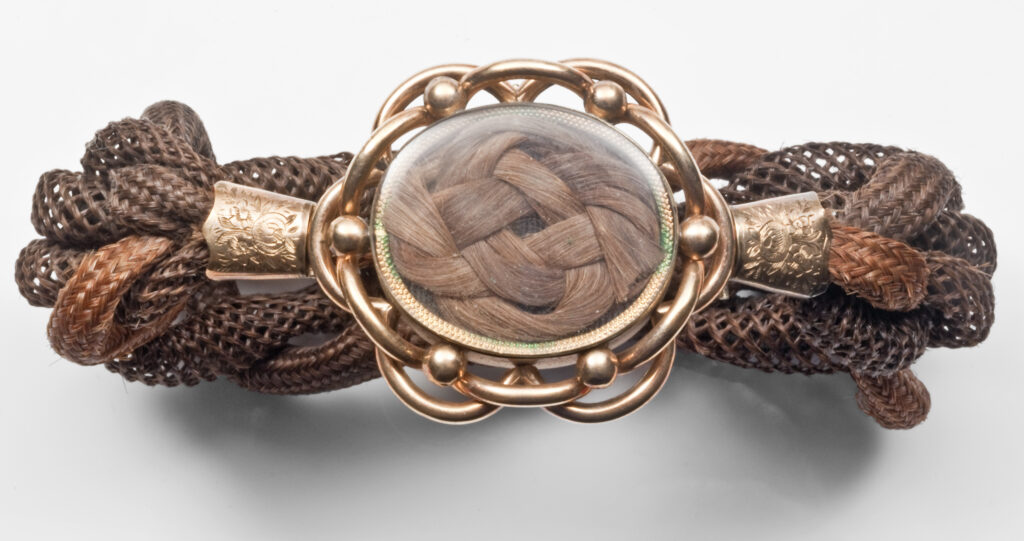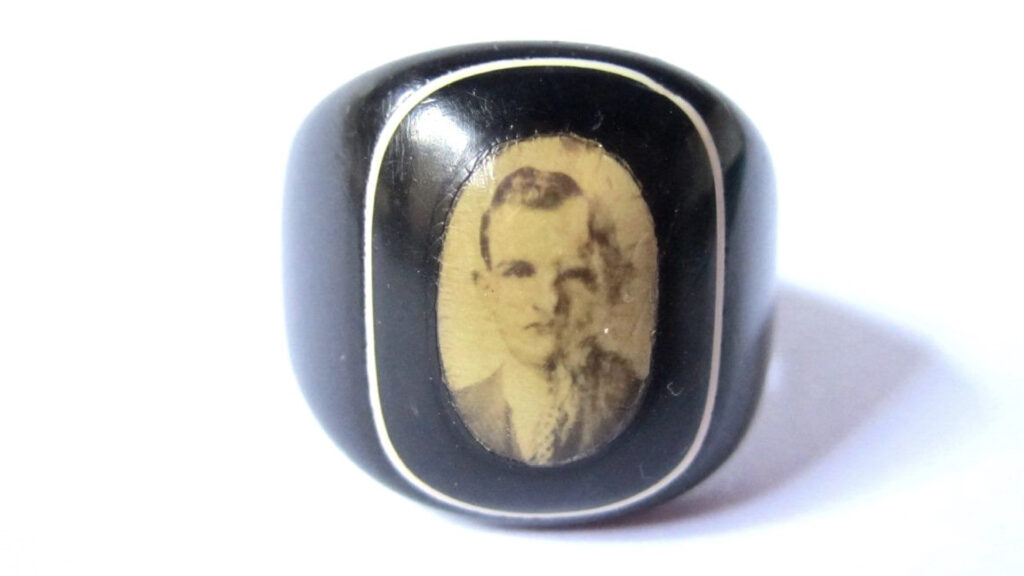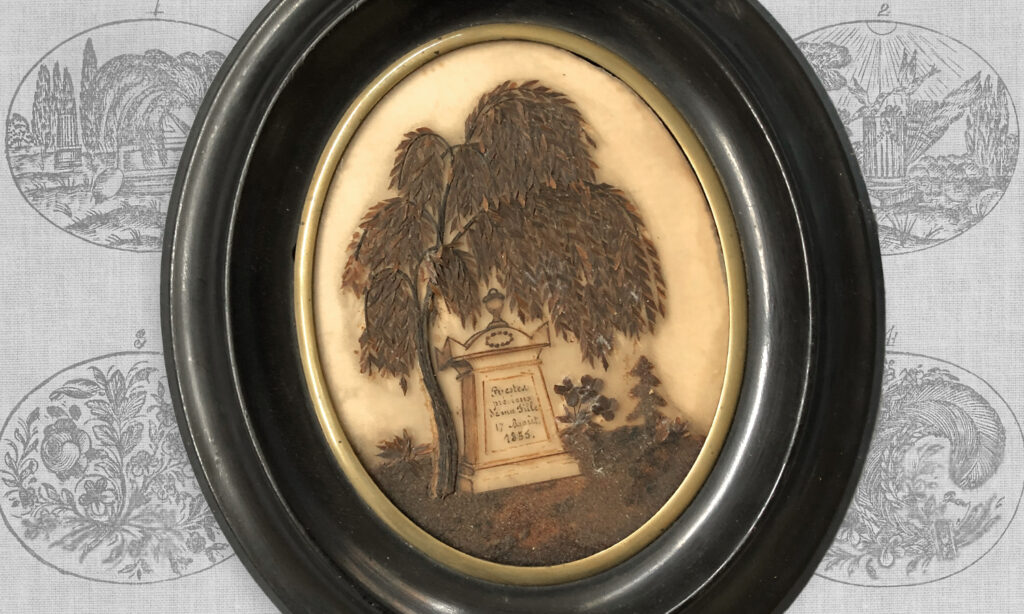A History of Hair Weaving, Part 2

Custom
The custom of giving and receiving hairwork can be for mourning or sentimental purposes, but its singular theme is love. Rules apply in the giving of hairwork, it can be a grand statement of affection between two people and, in the past, there were rules to abide by. An unmarried girl could receive nothing from an unmarried man unless she was betrothed to him; however, a girl could give an admirer a lock of hair at his request and accept one, provided that neither was set in a jewel.
Trade of hair between family members was common, as was exchange of hair during the departure of a loved one for a period of time. Mourning pieces were often referenced in a will, with money left allocated for the chosen pieces. This could range from hairwork in rings to lockets. During the 19th century and the mass hairworking industry, inexpensive bands of woven hair (not always of the deceased), with pinchbeck fittings were a popular choice. Memorial pieces could also be commissioned by family members, in the shape of bracelets, earrings or whatever the wearer chose. This custom can be traced back to the late 16th / early 17th centuries, with notably William Shakespeare allocating mourning rings in his will (1616). There are many different reasons for the creation of hairwork jewellery and memorials, but at their inception, it is about love.






